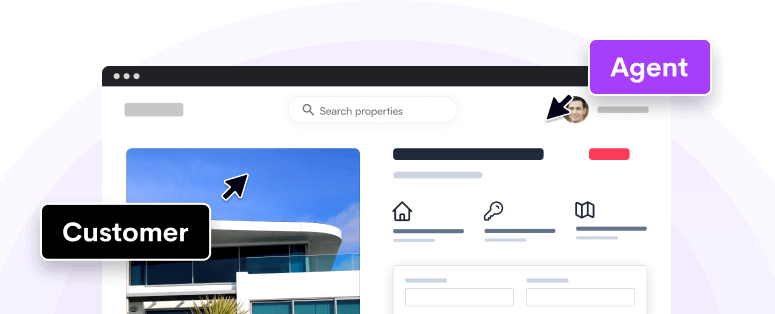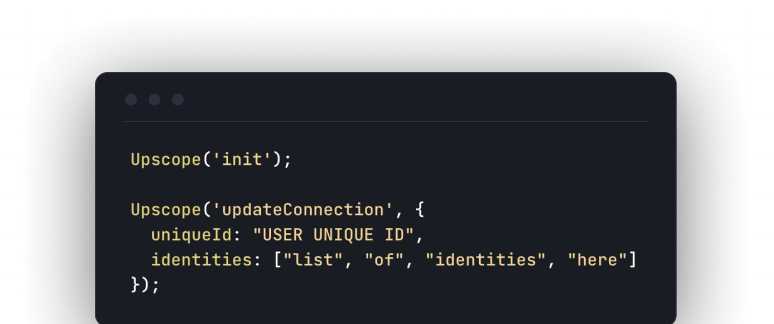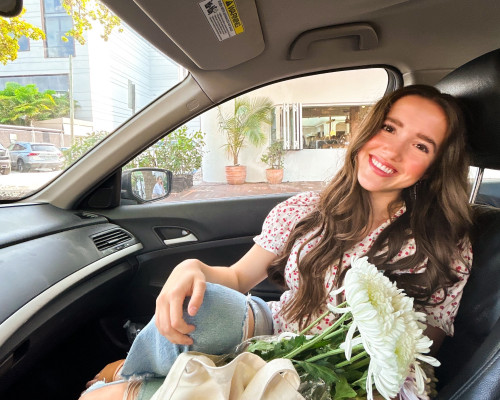One founder of a company decided to manually onboard users and converted 55%
of them. It doesn't scale but it works wonders. Imagine you could show
each new user your app in minutes? We've managed to get our manual onboarding
set up down to an effortless 3 clicks in 3 seconds. We'll show you why great
companies recommend a manual onboarding strategy and how to make it flow
perfectly.
Related: See The Practical Guide For Your User
Onboarding
Contents
-
See why 3 great founders recommend manual onboarding.
-
Why it's a pain setting up a meeting and screen sharing.
-
Co-browsing is the instant screen sharing we want.
-
The final piece of the puzzle to make it all smooth.
-
Why this all works.
Below are 3 companies talking about their experience of manual user onboarding
These are all experienced entrepreneurs and organisations.
ContentMarketer's Sujan Patel increased conversions to 55% through manual
onboarding.
"Sujan decided to try getting on the phone with sign-ups to give them what
is commonly referred to as a manual user onboarding experience. To promote his
initiative, new users were offered a chat with Sujan via an in-app modal.
The conversations Sujan had revolved around content strategy, and he was
able to help educate them on how to use the tool to improve theirs.
Before this experiment, new signups had no access to human help. And at
least now they could chat with an expert.
About 55% of the people Sujan talked to converted to paid. A big win for
ContentMarketer’s bottom line.
Sujan then figured if he can talk to more people—only about 15% were opting
into the conversation—he’d be able to further improve his trial to paid
customer conversion rate."
https://www.appcues.com/blog/6-growth-experiments-sujan-patel-ran-to-improve-user-onboarding
Intercom's co-founder says they grew Skype by Skype, webinar by webinar
When our company Upscope, signed up for Intercom, we were offered a one to one
training call and accepted.
We had all our key questions answered by a very knowledgeable guy, possibly
eating a sandwich when he answered us.
While I don't know if Intercom are still doing this, here's a little look into
their history and how they grew as described by their co-founder:
"So whilst I know most people are looking for our “one top tip” or the
magical “hack” that got us customers, there really isn’t any one thing.
We grew email by email, Skype by Skype, webinar by webinar, and looking back
I can’t distill it down to any one thing.
Just do all of it and one of two things will happen: either it starts
working eventually, or you just can’t do it anymore.
If it doesn’t work out, you’ll feel a lot better knowing that you gave it
everything you had, rather than realising you should have actually talked to
your would-be customers before trying to automate them."
https://www.intercom.com/blog/how-intercom-got-our-first-customers/
Appcues co-founder says manual onboarding does not scale but it gives you
the information you need for later
"In lieu of investing your development time in user onboarding, you should
do whatever it takes to help your new users achieve success.
Reach out to them personally via email, install a live chat product, set up
demos, etc.
Yes, this approach doesn’t scale.
But it will save your startup’s most scarce resource, developer time, and
accumulate your startup’s second most scarce resource, information."
https://www.onstartups.com/why-your-startup-should-ignore-your-onboarding-experience-for-now
Why is manual onboarding a pain? Because of scheduling and screen sharing
Besides the occasional awkward conversation with a customer, it's also a pain
to set up and get going.
If you don't use a tool like Calendly, you end up doing the following just
to schedule a meeting:
-
They contact you by email or on live chat.
-
You offer to set up a meeting in your Google calendar.
-
You go back and forth on picking a good time.
We use Calendly, so users can click a link and book
time with us:

The user picks a time and books it without us doing anything.
It's added to our calendar and we get notified by email.
The meeting itself involves setting up screen sharing which is hell
To show them the app, you'll need to see their screen or show yours. That
involves the following:
-
User clicks your e.g. UberConference link within the meeting request.
-
They enter their name to join the conference.
-
They choose whether it's a video and audio call or just audio.
-
They start talking.
-
They then click "Screen sharing" to show their screen.
-
They need to first install the browser extension for screen sharing.
-
They then show you their screen.
-
To explain something faster, you switch and show them your screen.
-
You complete the onboarding session.
With co-browsing the screen sharing is instant
Here's how Upscope co-browsing is better than old
school screen sharing.
-
There are no downloads
-
You click once to see the user on your app.
-
You highlight buttons you want them to click on.
-
You can take control to scroll and click for them.
You can combine this with Calendly for going from the meeting reminder to
seeing their screen and guiding them in 10 seconds.
However, that's assuming they turn up for the meeting...
Here is the finishing touch needed to perfect it. Don't wait around for them
to turn up to the meeting.
We figured out the little piece that completes the process for one to one
onboarding sessions.
Combine Calendly with Upscope co-browsing and your own personal Upscope
co-browsing link.
-
User clicks your personal co-browsing link within the meeting request.
-
You are notified that they have arrived on your website.
-
You click to begin screen sharing and click again to begin a browser call.
-
You complete the onboarding.
This means that you can get on with your work and not wait around for the
user. When they arrive, you are notified and click once to start.
What's your personal co-browsing link and how does it work?
This is my link for Upscope:
https://upscope.com/?upscopeCall=pkullar
Your link would be e.g.
https://YourWebsite.com/?upscopeCall=Yourname
You can add it to your meeting requests as below.

At the time of the meeting, the user clicks that link and arrives on your
website.
You're logged into Upscope on another tab which flashes to tell you they've
arrived.
You click that tab and see them appear on your Upscope list with your name.

You click that to instantly see them moving around on your site.
You click again to start a phone call.
You do the onboarding session.
When something is easy, you do it more
Remember when people illegally downloaded music for free using complicated
sneaky torrent sites?
Then these smart phones came around and started offering songs at $1 each.
People don't use those torrent sites anywhere near as much.
It became so easy to click 'buy song'.
Manual onboarding works and of course converts higher because you're
building trust, answering questions and you know how to explain the solution
to their problem.
If you make manual onboarding simpler, you enjoy doing it more.
If you do it more, you'll be converting more.
Let's say each customer has a life time value of $3,000. Spending a 15 or 20
minute session with them is an incredible investment of time.
90% of our top users went through our walk through process.
If you're not using co-browsing and you want to try this process for free,
read the co-browsing guide or directly visit
Upscope co-browsing.






